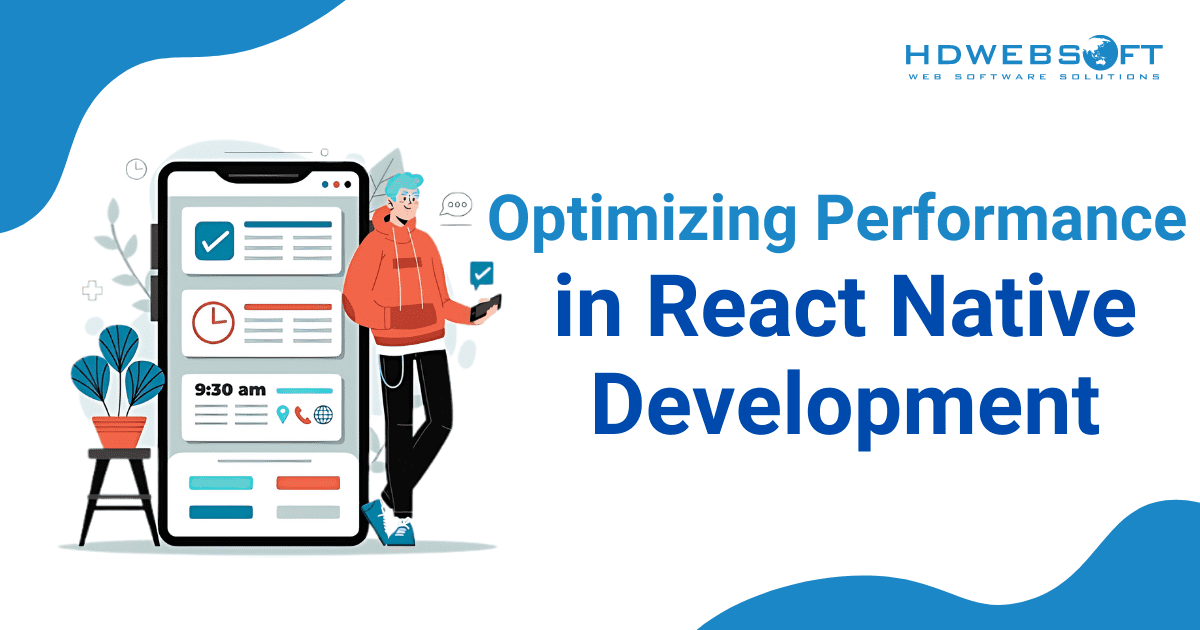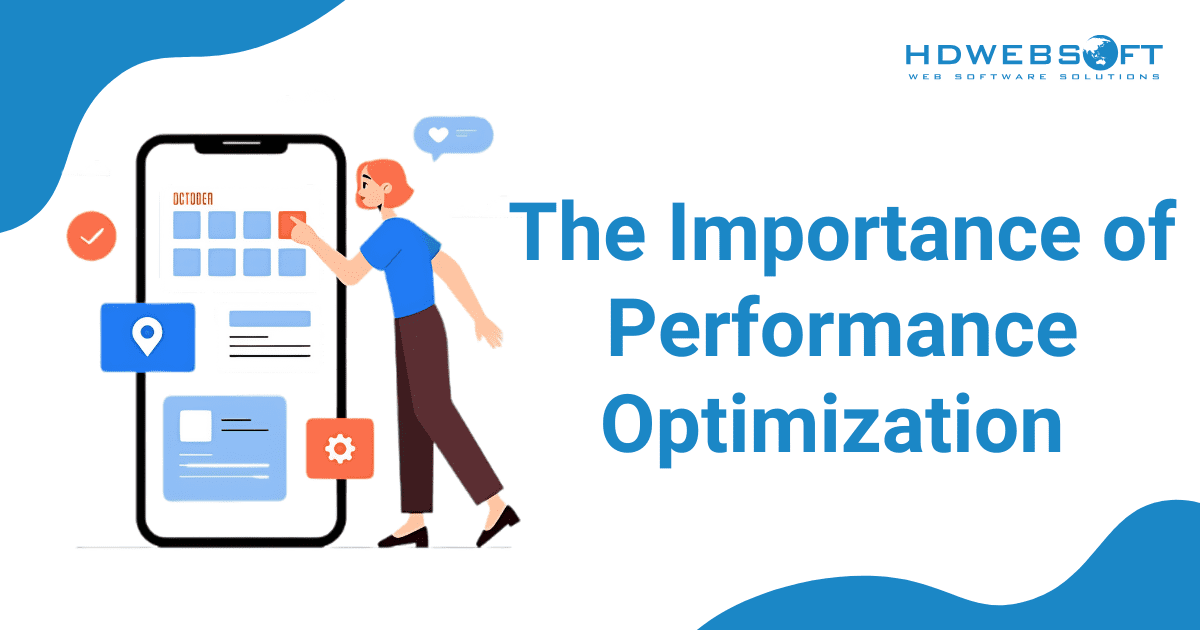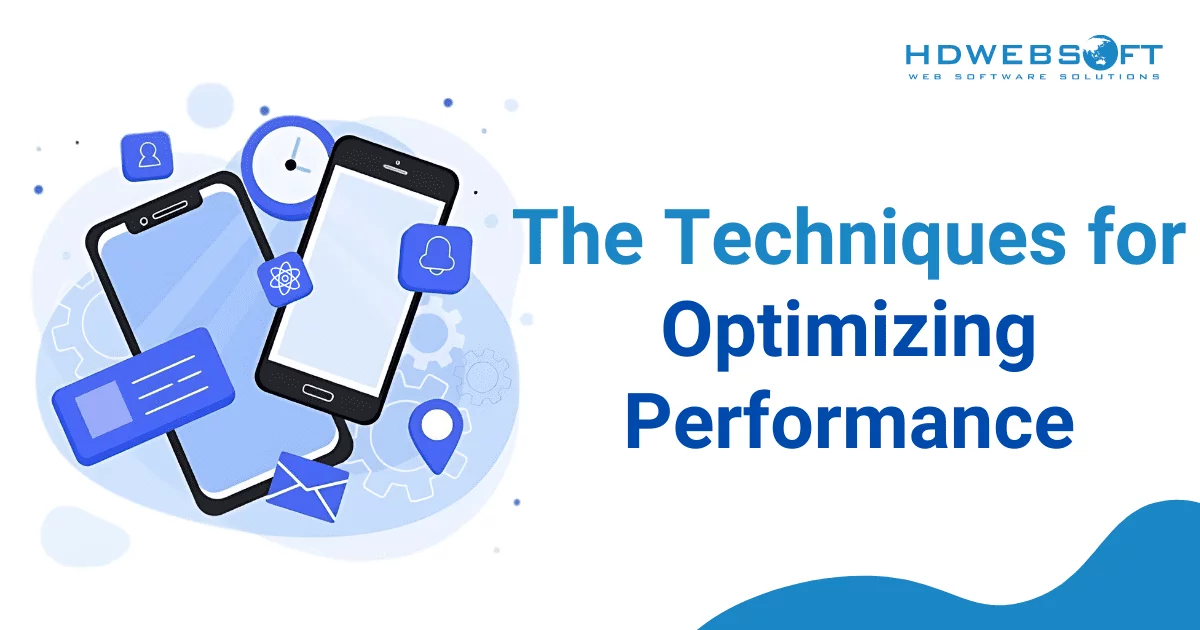
Optimizing Performance in React Native Development
In the fast-evolving landscape of mobile application development, performance optimization is crucial for ensuring that applications run smoothly and efficiently, providing a seamless user experience. Performance issues can lead to slow load times, unresponsive interfaces, and a general sense of frustration for users, which can significantly impact an app’s success. Therefore, developers must prioritize performance optimization throughout the development process.
React Native, a powerful framework for mobile application development, plays a significant role in optimizing performance. It equips developers with a range of tools and techniques to enhance app performance. By harnessing React Native’s capabilities, developers can create high-performing apps that not only meet user expectations but also gain a competitive edge in the market. This article delves into the importance of performance optimization in React Native development. It also offers practical tips for achieving optimal performance, along with some real-world case studies from our company.
The Importance of Performance Optimization

Performance optimization is the systematic process of fine-tuning software to ensure it delivers the best possible experience for its users. Crucially, it relies on performance metrics to measure factors that affect the UX. This can involve a variety of techniques, from optimizing code for efficiency to strategically managing resources. But why is it so important? Here are some key reasons:
User Experience
A well-optimized app acts like a well-oiled machine, delivering a seamless and responsive user experience. This translates directly to higher user satisfaction and engagement. Users become less likely to tolerate the inconveniences that occur in the application journey. As a result, they abandon the app for a smoother competitor.
Conversely, a well-optimized app feels effortless to use, keeping users engaged and coming back for more. This fosters a sense of trust and reliability, solidifying the app’s position as a valuable tool.
Retention Rates
In today’s competitive digital landscape, user patience is thin. A report found that 53% of mobile users abandon apps if it takes longer than 3.5 seconds loading . If performance isn’t optimized, this translates to a mass exodus.
Frustrated users are more likely to abandon an app altogether, resulting in high abandonment rates. This “churn” can cripple user bases and hinder the overall success of the application. By minimizing lag and eliminating bugs, it keeps users engaged and satisfied, ultimately reducing churn and fostering a loyal user base.
App Store Rankings
In the competitive world of app stores, first impressions are everything. Performance issues like sluggishness or crashes can leave a bad taste in users’ mouths, leading to negative reviews and plummeting ratings. These negative reviews act as a red flag for potential users, pushing them towards better-performing alternatives.
On the other hand, a well-optimized app with a smooth and responsive interface fosters positive user experiences, translating into glowing reviews and higher rankings within app stores. This increased visibility broadens your reach, attracting a wider audience and ultimately driving more downloads. Performance optimization isn’t just about technical finesse – it’s about creating a foundation for user satisfaction, positive reviews, and a flourishing app.

Performance can significantly affect the app’s ranking. React Native can help ease UI/UX design.
Resource Efficiency
Optimized apps function more efficiently, judiciously utilizing device resources like processing power and memory. This translates to a significant improvement in battery life—a crucial factor for users on the go or those with older devices.
Additionally, optimized apps minimize data usage by streamlining communication between the app and the server. This is a major advantage for users with limited data plans, allowing them to enjoy the full functionality of the app without worrying about exceeding data caps.
Competitive Advantage
The app market is a battlefield, and performance can be the deciding factor in a user’s download decision. With countless options available, users are more likely to choose an app that delivers a lightning-fast and responsive experience. Slow loading times, frequent crashes, or clunky interfaces create frustration and push users toward competitors.
Performance optimization allows your app to stand out from the crowd. By ensuring a smooth experience, you create a competitive edge, attract a larger user base, and ultimately achieve greater success in the crowded app market.
The Techniques for Optimizing Performance

Efficient Rendering
One key strategy for enhancing the performance of a React Native app is to avoid unnecessary re-renders. Unnecessary re-renders can significantly degrade the app’s performance. Ensuring that components only re-render when absolutely necessary is crucial for maintaining a responsive user interface.
Using PureComponent and React.memo
PureComponent
and
React.memo
are effective tools to help prevent unnecessary re-renders.
PureComponent
performs a shallow comparison of props and state, re-rendering only when there are actual changes. Similarly,
React.memo
is a higher-order component that memoizes the result, ensuring that the component re-renders only when its props change. These tools help optimize rendering by ensuring that components update only when needed.
State Management
Efficiently managing state updates is crucial for performance. While the
useState
hook is great for handling local states,
useReducer
can be more effective for managing complex state logic. It provides more control and predictability, centralizes state updates, and reduces unnecessary re-renders.
Utilizing Context and Redux for Global State
The Context API and Redux are powerful options for managing the global state. The Context API is useful for avoiding prop drilling, but overuse can lead to performance issues. Redux, on the other hand, is designed to manage complex global states efficiently. It optimizes state updates and ensures that only the components that need to re-render do so.
Reducing Load Times
Reducing initial load times is essential for a smooth user experience. Code splitting and lazy loading help achieve this by breaking your code into smaller chunks and loading them on demand. React’s
React.lazy
and
Suspense
make it easy to implement lazy loading for components, ensuring that your app becomes interactive faster.
Optimizing Asset Loading
Efficiently loading assets such as images and fonts can significantly improve performance. Use
Image.prefetch
to load images in advance and ensure that only necessary assets are loaded initially, deferring non-essential ones until needed. This approach minimizes load times and improves the overall user experience.
Utilizing Native Modules
Native modules allow developers to write parts of an app using native code (Java, Swift, Objective-C) for performance-critical tasks that are not efficient in JavaScript. Knowing when and how to use native modules can greatly enhance app performance.
When and How to Use Them
Native modules are best used for tasks that require high performance, such as complex calculations, background processes, or interaction with device hardware. By offloading these tasks to native code, you can significantly improve the performance of your React Native app. Integrating native modules involves writing the necessary native code and bridging it to JavaScript, allowing your app to benefit from the performance advantages of native execution.
Read more: Native App vs. React Native for your Mobile App Development.
A few HDWEBSOFT case studies

In our continuous efforts to enhance the performance of mobile applications, HDWEBSOFT has successfully implemented a variety of optimization techniques using React Native. These case studies showcase the challenges we faced, the solutions we devised, and the impressive results achieved.
Each case study highlights our commitment to delivering high-performing, efficient, and user-friendly applications. By sharing these real-world examples, we aim to provide insights into our approach and demonstrate the tangible benefits of performance optimization in React Native development.
Multimedia Online Platform
In this project, we were tasked with optimizing an online multimedia platform that allows users to upload, share, and view many types of digital content. The main challenges included integrating with various data sources and channels to sync videos and ensuring that all screens were dynamic and highly modifiable.
To overcome this, we created a base construction adaptable to various views and built modular functionality for easier plug-and-play integration. Additionally, we employed scripts, CI/CD pipelines, and CLI tools to automate all processes, resulting in a robust and efficient platform.
The meet-and-greet project
For this project, we developed a platform that allows users to have private video conversations with top athletes. The key performance challenge was to manage real-time video streaming efficiently while maintaining high-quality video and minimal latency.
We used efficient state management techniques with Redux to handle real-time updates and employed React Native’s native modules to manage video encoding and decoding processes. This approach ensured a high-quality, low-latency video chat experience, delighting both users and athletes.
The platform for healthcare knowledge
This case study involved developing disease-specific mobile apps that enhance patients’ knowledge, boost their self-confidence, address their needs and concerns, and streamline the organization and coordination of their healthcare information. A crucial challenge was ensuring seamless video playback across iOS, Android, and web platforms.
Leveraging React Native, we implemented a unified codebase that allowed us to manage and synchronize video content across different devices efficiently. By utilizing React Native’s capabilities for platform-specific optimizations and media handling, we ensured that the videos displayed perfectly on all platforms, maintaining a consistent and high-quality viewing experience for users.
Dive deep into our React Native Development Service.
To sum it up…
Optimizing performance in React Native development is paramount for delivering seamless and responsive mobile applications. By prioritizing performance optimization, developers ensure a positive user experience characterized by fast load times, smooth interactions, and efficient resource management. Techniques such as efficient rendering practices, strategic state management, and leveraging native modules for critical tasks play pivotal roles in achieving these goals.
At HDWEBSOFT, our commitment to performance optimization is demonstrated through real-world case studies. These projects exemplify our expertise in enhancing app performance, ensuring that our solutions not only meet but exceed user expectations across diverse mobile environments. If you’re looking to hire React Native developers specializing in performance optimization or building your app, we’re happy to help.









